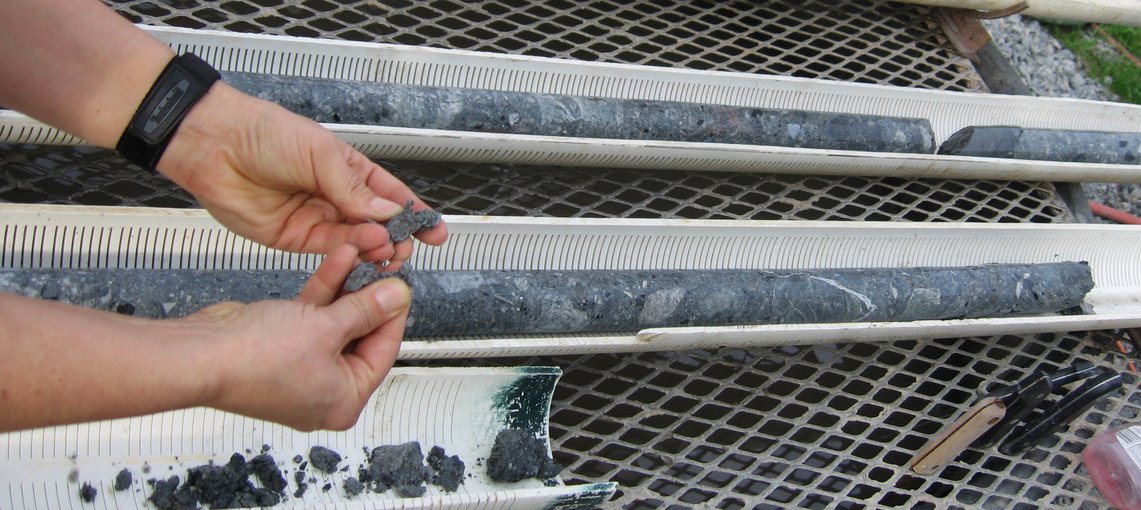
Oct. 5, 2018
Feature Story
Life in the Earth's Crust
Astrobiologists feature in a recent story from The Scientist

Researchers examine geological samples from a deep drilling project.Image credit: Aaron Gronstal.
A recent feature in The Scientist focused on the study of Earth’s deep biosphere, from mines to deep sea volcanoes. Earth’s deep biosphere remains one of the least explored haven’s of life’s diversity on our planet, and also has important implications for understanding habitability beyond Earth.
The article discusses the research of hydrogeologist Barbara Sherwood Lollar (University of Toronto), who has been a longtime collaborator of PIs funded by the Astrobiology Program. In 2006, she was part of a team of researchers let by Tullis Onstott (Princeton University) that explored deep mines in South Africa. Their work revealed bacteria that survived in the harsh conditions of fracture water, some 2.6 kilometers below the surface. She is now turning her attention to a mine in Ontario, Canada, where 2-billion-year-old water has been found seeping from the rocks.
The article also discusses the research of microbial oceanographerJulie Huber (Woods Hole Oceanographic Institution), who receives support from the Astrobiology Program. Huber studies microbial habitats in waters contained in Earth’s oceanic crust, which are accessed by drilling projects and the exploration of deep sea vents. Exploration of the Earth’s deep biosphere has revealed numerous organisms that are capable of thriving in environments that are isolated from the surface. These microorganisms have a great deal to teach astrobiologists about the limits of life, and the potential for habitable environments deep below the surfaces of other rocky worlds.
To read more from The Scientist, visit: https://www.the-scientist.com/features/life-thrives-within-the-earths-crust-64805